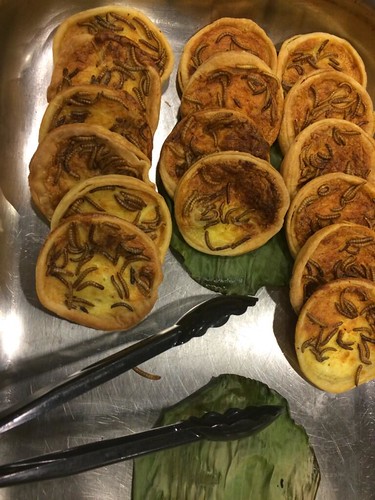As an entomologist, the notion of eating insects isn’t new to me. However, for most Americans, the thought can make their stomachs churn. And yet, maybe seeing insects on their dinner plates is something Americans should get used to seeing.
Yesterday, I delivered the keynote address at the Insects as Food Conference, which was hosted by the FAO and Wageningen University in the Netherlands. As director of USDA’s National Institute of Food and Agriculture (NIFA), my goal is to ensure that the science we invest in leads to solutions to today’s most pressing challenges. One of those challenges relates to our world’s growing population, which is expected to exceed 9 billion by 2050. We need to find new ways to feed all people while minimally impacting the environment. This “9 Billion Problem” has implications for how we grow and view food now and in the future.
Insects have served as a human food source for tens of thousands of years and may be part of our toolkit in the future in helping solve global food security challenges. Today, insect eating is rare in the developed world but remains a source of food for people in developing countries in Central and South America, Africa and Asia. According to the Food and Agricultural Organization of the United Nations, 1,900 different insect species are consumed by 2 billion people in more than 80 countries across Asia, Africa and the Americas.
There are many advantages to having insects as food. Insects contain more protein and are lower in fat than traditional meats, and contain a number of micronutrients critical for human well-being. Because of their incredible physiological efficiency, insects require significantly less food to develop on. Insects save a substantial amount of energy and natural resources by their ability to get their heat from the surrounding environment. The environmental impact of insects is also significantly minimal. Finally, their reproduction rate is much higher, making them much easier to raise.
However, for all the advantages of eating insects, there are still many unanswered questions. Little is known about the nutritional quality and safety of eating certain insects. What would it look like to “farm” insects at a mass scale and are there any constraints that need to be considered? There are many unanswered questions about regulation and policy decisions. And of course, as I mentioned above, would eating insects be culturally acceptable to Americans?
As we work toward addressing issues such as food security, climate change, food safety, sustainable energy and childhood obesity, we might have to start thinking outside the box to find viable solutions. Incorporating insects on the dinner plate is just one small step in this direction, but it might lead to big outcomes around the world.

